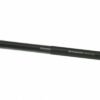Sennheiser MKH 50-P48
MICRÓFONO PROFESIONAL CONDENSADOR DE ESTUDIO SUPERCARDIOIDE
PRESENTACIÓN: PIEZA

Sennheiser MKH 50-P48
Sennheiser MKH 50-P48
Super-cardioid microphone designed for use as a soloist’s or spot microphone for applications requiring a high degree of side-borne sound muting and feedback rejection. Frequency-independent directional characteristics.
Pressure gradient microphone with super-cardioid pick-up pattern.
- Pressure gradient microphone with super-cardioid pick-up pattern
- High rejection of lateral sounds
- Constant directivity over the whole frequency range
- Exceptionally low inherent self-noise
- High sensitivity
- Switchable roll-off filter to compensate for proximity effects at a distance of approx. 0.5m
- Switchable pre-attenuation
- Dimensions
- Ø 25 x 153 mm
- Frequency response (Microphone)
- 40 – 20000 Hz
- Max. sound pressure level
- 134 (142) dB / 1 kHz
- Sensitivity in free field, no load (1kHz)
- 25 mV/Pa +- 1 dB
- Nominal impedance
- 150 Ω
- Min. terminating impedance
- 1000 Ω
- Equivalent noise level
- 12 (18) dB
- Equivalent noise level weighted as per CCIR 468-3
- 21 (27) dB
- Current consumption
- 2 mA
- Battery Specification
- 48 +- 4 V Phantom
In the midst of a challenging global pandemic, field recordist Thomas Rex Beverly finds solace in his work and says that nature is flourishing as human populations temporarily retreat. Last February, he ventured out to Washington state’s Eastern Cascades – a remote region surrounded by rugged mountains and lush forests.
With clients including Oscar and Emmy-winning sound editors, Beverly’s field recording work begins with experiencing the outdoors – and taking the time to listen. Beverly, whose sound libraries have been used extensively in the world of film and television – including on high-profile programs such as “Star Trek: Picard” and “Frozen II” – had originally intended to pursue a career writing orchestral, choral and ensemble works. He became enamored with field recording after reading “The Great Animal Orchestra” by Bernie Krause, a book which delves into natural soundscapes – or “the music of the wild” – while expressing the need for conservation and preservation.
Más productos Sennheiser
Productos relacionados
AKG
AKG
AKG
AKG
AKG
AKG
AKG











